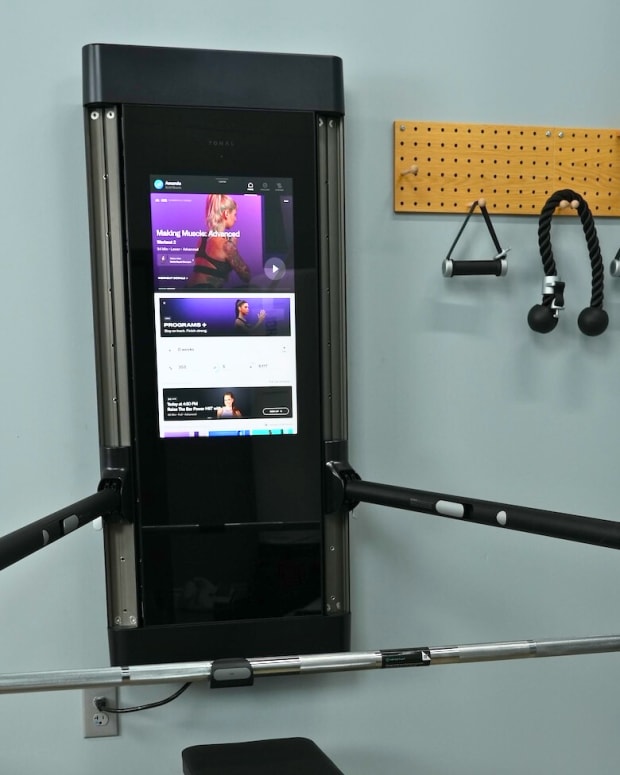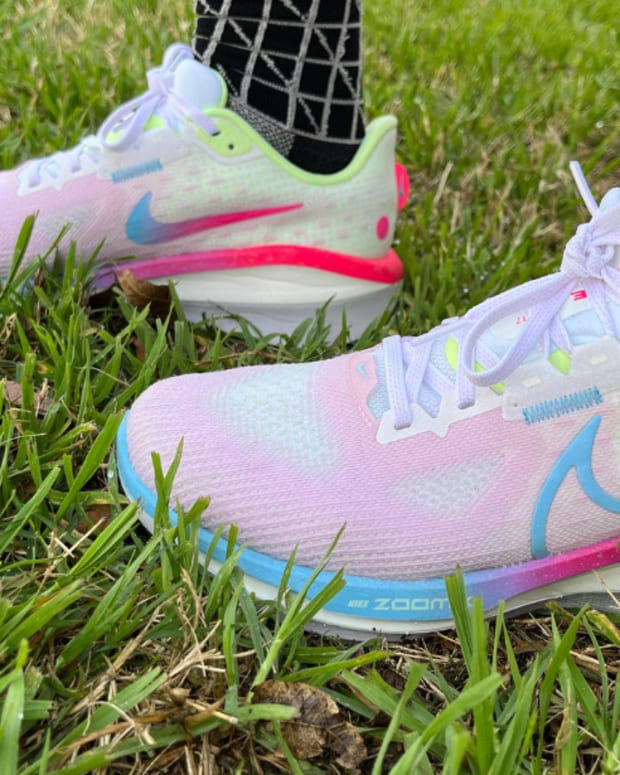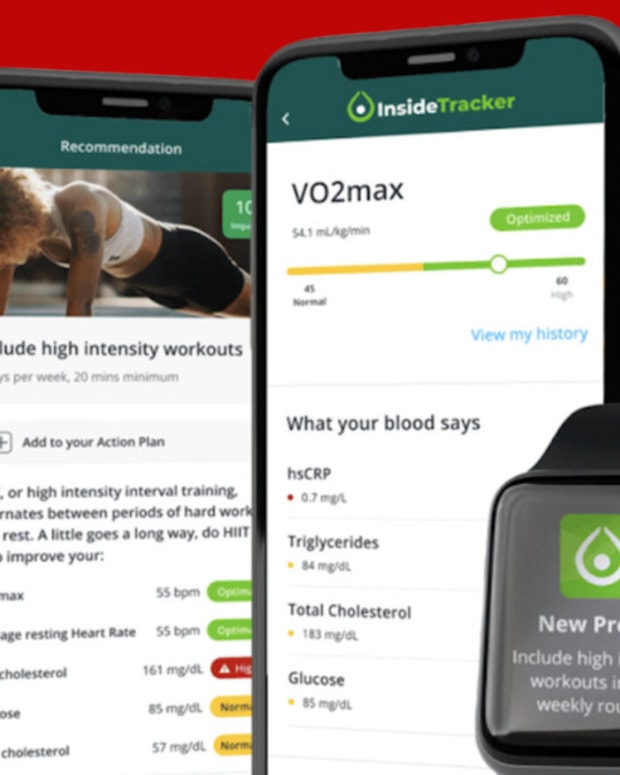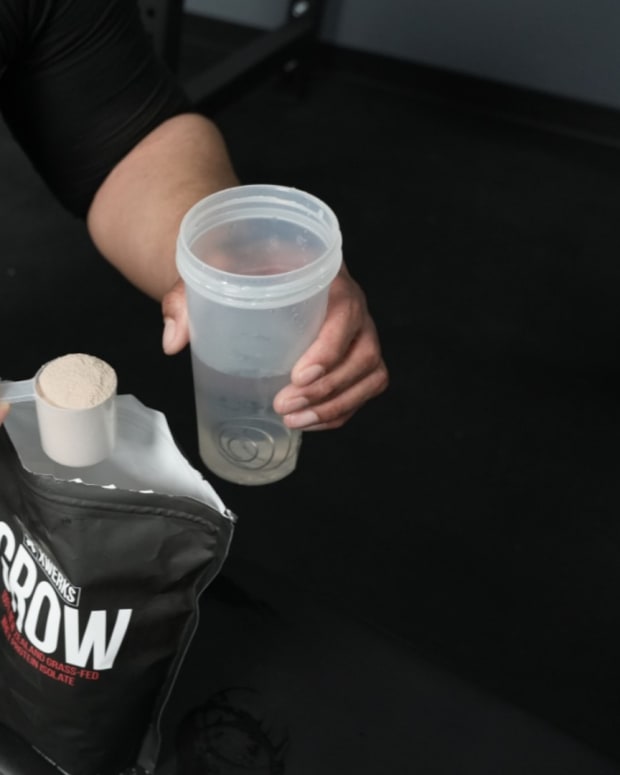The products featured in this article have been independently reviewed. When you buy something through the retail links on this page, we may earn commission at no cost to you, the reader. Sports Illustrated editorial staff are not involved in the creation of this content. Learn more here.
The best commercial treadmills won’t leave you feeling like a hamster on a wheel. These treadmills have powerful motors and advanced features that can range from large built-in touchscreens with access to thousands of workouts to impressive levels of incline/decline and lifetime warranties. Their heavy-duty builds and commercial-grade motors often come with higher-than-average user weights so that people of all shapes and sizes, from professional athletes to those simply staying in shape, can get a solid cardio workout.
This type of treadmill can also keep up with families with multiple runners on intense training programs. These top picks stand out for their performance, build strength and features that take them above and beyond the average treadmill.
Our Picks for the Best Commercial Treadmills in 2024:
- Best Overall Commercial Treadmill: Sole Fitness F85
- Best Commercial Treadmill for Classes: NordicTrack Commercial 2450
- Best Folding Commercial Treadmill: Sole Fitness F65 Treadmill
- Best Commercial Treadmill with a Large Display: NordicTrack Commercial X32i
- Best Commercial Treadmill with a Slat Belt: Sole Fitness ST90
- Best Commercial Treadmill for a Studio Feel: Echelon Stride-5s Smart Treadmill
- Most Comfortable Deck Commercial Treadmill: ProForm Pro 9000
Best Overall Commercial Treadmill: Sole Fitness F85
Key Features and Specs
- Dimensions: 66 inches H x 82.5 inches L x 38 inches W
- User weight capacity: 375 pounds
- Machine weight: 319 pounds
- Deck dimensions: 22 inches x 60 inches
- Incline levels: 15% incline (-6% decline)
- Speeds: Up to 12 miles per hour
Runners and walkers looking for a for a top-notch treadmill that can stand up to commercial use need look no farther than the Sole Fitness F85. This burly treadmill boasts a powerful 4.0 HP motor—the brand’s strongest—and supports users that weigh up to 375 pounds. Users can reach speeds up to 12 miles per hour, and inclines from -6% up to 15%.
We love that the F85’s 15.6-inch touchscreen comes with seven preloaded apps, including Netflix and YouTube, for easy entertainment. We also appreciate that it supports screen mirroring and the new Sole+ fitness app for additional workout choices.
Related Post: Everything You Need to Know About Sole's Treadmill Line
The F85 does fold, making it a great choice for small spaces, or those that are used for multiple workouts that may require different amounts of room. It also features multiple cooling fans for comfort when you’re sweating.
It comes with a lifetime warranty on the frame and motor, three-year warranty on the deck and other parts, one-year warranty on labor and 90 days on cosmetic parts.
Best Commercial Treadmill for Classes: NordicTrack Commercial 2450
Key Features and Specs
- Dimensions: 65 inches high x 35.6 inches wide x 78.5 inches long
- User weight capacity: 300 pounds
- Machine weight: 303 pounds
- Deck dimensions: 22 inches x 60 inches
- Incline levels: 12 percent incline (-3 percent decline)
- Speeds: Up to 12 miles per hour
The NordicTrack Commercial 2450 has a 22-inch tilt and pivot HD touchscreen on which you can watch fully integrated iFit treadmill workouts. This model has Autoadjust technology that automatically changes the speed and incline to follow your chosen workout, including terrain-matching for self-guided workouts in locations around the world.
The tilting and pivoting of the screen come in handy for off-treadmill workouts, which you can also get through iFit. These workouts include everything from yoga and Pilates to cycling or elliptical workouts, which you can use on other iFit-compatible machines. iFit syncs and tracks your stats automatically, and if you get a family membership, you set up separate profiles for each family member. This treadmill is already expensive, but you also need to factor in the price of a monthly iFit membership. The 2450 only comes with a 30-day iFit trial membership.
Related Post: The Complete NordicTrack Treadmill Guide
The 2450 comes equipped with a 3.6 continuous horsepower (CHP) motor that fully supports the maximum speed of 12 miles per hour, 12 percent incline and -3 percent decline for long distances. The Bluetooth compatibility allows you to use a heart rate strap or connect to the built-in Bluetooth speakers. This model also contains Activpulse technology that combines with heart-rate controlled workouts to automatically change speed and incline to help you stay within specific heart rate zones. The huge screen and iFit workouts make the 2450 a great option if you want integrated workouts. However, it has a relatively low 300-pound maximum weight capacity, which could limit use for larger runners.
Pros:
- Autoadjust technology
- Activpulse technology changes speed and incline based on heart rate
- Large 22-inch touchscreen that tilts and pivots for on-machine or floor workouts
- Terrain-matching on self-guided runs
Cons:
- Requires a monthly subscription to access programs
- 300-pound weight capacity can limit use for heavier users
Best Folding Commercial Treadmill: Sole Fitness F65
Key Features and Specs
- Dimensions: 66 inches high x 37 inches wide x 82 inches long
- User weight capacity: 325 pounds
- Machine weight: 262 pounds
- Deck dimensions: 22 inches wide x 60 inches long
- Incline levels: 15 levels
- Speeds: 0.5 to 12 miles per hour
The Sole Fitness F65 is a large treadmill that measures 66 inches high by 37 inches wide by 82 inches long, but its folding design significantly reduces the horizontal footprint. For a commercial treadmill, it saves space but doesn’t take away from the machine’s features or the durability for which Sole is known. This model features six built-in workout programs, along with two custom and two heart rate based programs. All programs are controlled on a 7.5-inch backlit LCD screen.
For a folding model, the F65 offers premium quality, coming with a lifetime frame and motor warranty, three years on the deck, electronics and parts and one year on labor. Sole doesn’t cut back on running space, providing a large 22-inch wide by 60-inch long deck, which is big enough for taller users and those with a longer stride. The wide width is also helpful when doing high-speed training, too, because it’s easier to stay on the belt.
A tablet holder on top of the console lets you watch a separate device while working out, and there’s a built-in USB port to keep that device charged. Built-in Bluetooth speakers can connect to a separate device to play your own music through the built-in sound system. The speed and incline controls are simple, with incline/decline and speed controls on both the console and handlebars. However, there are only seven direct speed controls and seven direct incline controls, which can make doing interval workouts more difficult because you have to scroll to get to certain speeds and inclines.
Pros:
- Easy to fold up
- Large 22-inch by 60-inch running surface with a folding design
- Lifetime frame and motor warranty
Cons:
- Few speed and incline adjustment buttons
Best Commercial Treadmill with a Large Display: NordicTrack Commercial X32i
Key Features and Specs
- Dimensions: 73 inches high x 40 inches wide x 76.5 inches long
- User weight capacity: 300 pounds
- Machine weight: 400 pounds
- Deck dimensions: 22 inches wide x 65 inches long
- Incline levels: 40 percent incline (-6 percent decline)
- Speeds: Up to 12 miles per hour
The NordicTrack Commercial X32i is a high-end model, even for a commercial treadmill. It has a 32-inch tilting touchscreen that connects directly with iFit for access to 1,000+ workouts. The iFit app also provides access to workouts away from the treadmill, including yoga, HIIT, strength training and other NordicTrack equipment workouts. The large screen sets this model apart from the competition, but it’s not the only noteworthy feature.
The X32i has a staggering 40 percent incline, which is one of the steepest inclines available on any treadmill. That’s combined with a -6 percent decline, offering a real-world experience and one that can be gentler on joints and injuries. This model is equipped with Autoadjust technology, wherein it fully syncs with iFit and automatically adjusts the speed and incline according to the workout. It’s also loaded with SmartAdjust technology to change the speed and incline based on your heart rate when doing a heart-rate-based training session.
The X32i is fully Bluetooth compatible so you can listen to iFit trainers on headphones or the built-in speakers. Plus, it can connect to Google Maps and display running locations from around the world. Finally, the X32i has a 65-inch long belt, which is a full five inches longer than most commercial belts. While that makes for a big footprint, it also adds extra inches for taller users and runners with a long stride. On the downside, this machine requires a monthly iFit subscription, adding to the already high price. But for those who use the treadmill and iFit for the majority of their workouts, it’s hard to beat the X32i’s massive screen.
For more information on this treadmill, check out our NordicTrack Commercial X32i review!
Pros:
- Huge 32-inch touchscreen
- Autoadjust and SmartAdjust technology
- Steep incline range with several decline levels
Cons:
- Expensive
- Requires a monthly subscription
- Big footprint
Best Commercial Treadmill with a Slat Belt: Sole Fitness ST90
Key Features and Specs
- Dimensions: 65 inches high x 33.5 inches wide x 70 inches long
- User weight capacity: 330 pounds
- Machine weight: 376 pounds
- Deck dimensions: 20 inches x 60 inches
- Incline levels: 15 levels
- Speeds: Up to 12.5 miles per hour
The Sole ST90’s impressive slat belt design stands out in this unique category. Slat belts, a belt made of connected slats rather than a continuous piece of material, are usually found on non-motorized treadmills with a curved deck. The ST90 has a standard straight deck coupled with a powerful commercial 2 HP AC motor. The typical manual slat deck provides an excellent workout, but it can be difficult for untrained athletes to use. The ST90’s slat belt design reduces impact, like any other slat belt, but the motor allows users of all fitness levels to enjoy the benefits of this type of treadmill.
The belt design is supported by many of Sole Fitness’s most high-tech upgrades. Sole tends to focus on quality rather than technology, but this model has 10 standard programs, 12 custom programs and seven heart programs. Programs are chosen and controlled using the 10.1-inch touchscreen.
The ST90 is Bluetooth and WiFi compatible and allows screen casting so you can watch workouts or streaming services cast from another device to the built-in screen. The tablet holder on top of the screen can hold a device and keep that device charged with a built-in USB port. You can also use Bluetooth to connect your device to the built-in speakers.
The display is also where you can control the 15 incline levels and speeds up to 12.5 miles per hour. However, there are also direct control buttons for speed and incline on the handlebars for easy adjustment while you’re on the move. The potential con with the ST90 is the warranty, which includes five-year coverage on the frame and motor, three years on the deck and electronics and one year on parts and labor.
Pros:
- Motorized slat belt design
- Bluetooth and WiFi with screen casting
- Effective for beginning to advanced athletes
Cons:
- Disappointing warranty for a Sole product
Best Commercial Treadmill for a Studio Feel: Echelon Stride-5s Smart Treadmill
Key Features and Specs
- Dimensions: 63 inches high x 36 inches wide x 81 inches long
- User weight capacity: 400 pounds
- Machine weight: 315 pounds
- Deck dimensions: 22 inches wide x 60 inches long
- Incline levels: 16 levels
- Speeds: 0.5 to 12.5 miles per hour
The Echelon Stride-5s Smart Treadmill makes you feel like you’re at a (very posh) gym. From the double handlebar with heart rate sensors to the 16 incline levels reaching up to 15 percent grade, this machine looks like it belongs in a studio.
The performance adds to the studio feel too. It comes with a 24-inch HD touchscreen display, where you can connect to the Echelon app to access thousands of treadmill and other workouts, like yoga and strength training. The Echelon app requires a monthly subscription. Through that subscription, you gain access to professional trainers for on-demand and live classes. The screen rotates 90 degrees, so you can do other types of workouts in the same space.
Another strong point of this model is the Duro50 Cushioned Suspension. The suspension system increases shock absorption, reducing stress on the joints while the motor keeps up with the demand of long runs.
We like this machine’s low 6.5-inch step-up height, which is low enough for many users with limited mobility. It's combined with the excellent cushioning, which make this treadmill a good choice for users with joint or mobility issues. This Bluetooth-enabled machine has built-in speakers on which you can play your own music or connect to the sound system with Bluetooth headphones for a more private training session. The real downside to this machine is the warranty. Echelon only offers a one-year warranty on parts and labor, which is subpar for a commercial treadmill. Echelon offers the option to purchase an extended one-year warranty for $259 or two years for $399.
Pros:
- Large rotating screen
- Duro50 Cushioned Suspension System
- Low step-up height
Cons:
- Lackluster warranty
- Requires yearly subscription
Most Comfortable Deck Commercial Treadmill: ProForm Pro 9000
Key Features and Specs
- Dimensions: 59.6 inches high x 35.3 inches wide x 77.3 inches long
- User weight capacity: 300 pounds
- Machine weight: 263 pounds
- Deck dimensions: 20 inches wide x 60 inches long
- Incline levels: 12 percent grade (-3 percent decline)
- Speeds: Zero to 12 miles per hour
The ProForm Pro 9000 gets kudos for a very comfortable deck, thanks to the ReBound Pro Cushioning system. All it takes is watching a few videos of the ProForm Pro 9000 in action to see that cushioning at work. The deck visibly compresses under each footstep, reducing impact on joints. The Pro 9000 is foldable and has EasyLift Assist so that almost any user could lift and lower the deck on their own.
Beyond the deck, the Pro 9000 has a 22-inch touchscreen with WiFi and Bluetooth connectivity. You can connect headphones or a heart rate monitor to fully sync your workouts. Speaking of workouts, the Pro 9000 is iFit enabled. On the one hand, that means you need a monthly subscription to access programming. On the other hand, iFit subscribers get access to thousands of compatible workouts with programming that goes beyond treadmills to yoga, Pilates, HIIT and workouts for use on other iFit-enabled fitness equipment.
Related Post: The Complete ProForm Treadmill Guide
To round up a few other specs, the Pro 9000 inclines to a 12 percent grade and declines to a -3 percent grade. It’s powered by a 3.6 CHP motor, which is powerful enough for fast speeds at high inclines for users up to 300 pounds. However, the maximum user weight may limit use for heavier users. ProForm offers a strong warranty, with 10 years on the frame, two years on parts and one year on labor. However, according to Amazon reviews, customer service from ProForm can be difficult to work with.
Pros:
- Cushy ReBound Pro Cushioning System
- Easy to fold and unfold
- Strong motor and warranty
Cons:
- Low maximum user weight
- History of poor customer service
How To Choose the Best Commercial Treadmill for Your Home Gym
Programming
Commercial treadmills, much like home models, tend to have either built-in programming or smart programming that comes from a synced app; few models do both. The type and variety of programming you need will depend on your fitness goals. If you easily get bored on a treadmill, it’s better to have more workouts available directly on the machine or through a treadmill workout app. But if you’re the type of person who prefers to use the manual mode and watch your own device while you run, you don’t need a treadmill that can access 1,000+ workouts on an oversized touchscreen.
Treadmills with built-in programs may or may not have WiFi or Bluetooth connectivity because they’re not required to access the treadmill’s programming. This type of commercial treadmill is a good idea for those who may not have a strong WiFi connection. It’s also an option for those who don’t want to worry about connecting to an app or second device when getting ready for their morning workout. Additionally, these models don’t require a monthly subscription to access programming.
There are also treadmills that are compatible with either a specific fitness app or have high-tech upgrades that allow you to use one of several compatible fitness apps to access programming. The programming variety with this type of commercial treadmill is much greater than those that only offer built-in programming.
For example, some models can connect with several fitness apps (others only connect to one) to access on-demand or live classes, leaderboards, group challenges and a huge library of strength training, yoga and Pilates. Depending on the fitness app, you may also access training programs, like couch to 5K or half/full marathon training programs.
The apps may also sync with the treadmill’s system to automatically adjust the treadmill’s speed and incline based on the workout. Some models may also connect to Google Maps, with runs that allow you to run virtually in locations around the world.
However, fitness apps require a monthly subscription fee. Commercial treadmills are already expensive. When you add in the expense of a monthly subscription, the treadmill’s overall price continues to rise for as long as you own the treadmill. Treadmills that use an app for programming can usually operate without a monthly subscription, but that may limit you to using the manual program.
There are some commercial treadmills that don’t sync to a specific app but have screen mirroring or screen sharing so you can watch programming on a built-in screen. They don’t offer automatic speed and incline adjustments, and they typically have at least a few pre-programmed workouts.
Speed, incline and decline
Commercial treadmills can have top speeds that range anywhere from 10 to 15 miles per hour. Most runners, even competitive athletes, don’t usually run faster than 12 miles per hour— a five-minute mile. If you’re in the elite group that runs over 12 miles per hour (and you know who you are), you may be limited to the few models that reach 15 miles per hour.
Models with a top speed of 10 miles per hour (equivalent to a 6-minute mile) typically have a motor that’s 3.0 HP or less. We recommend a motor of at least 3.0 HP for running. Anything less and the motor may not be able to keep up with demand and can get noisy at high speeds, shaking and wearing out quickly. However, this type of commercial treadmill is perfect for those who walk and/or do light jogging. There’s no need for those high speeds if you’ll rarely get above 4.5 miles per hour.
Incline and decline features are expected on a commercial-grade treadmill. And commercial treadmills are much more likely to have both incline and decline features, though some may only have incline. Models with both incline and decline features typically cost a bit more, but they offer a true real-world running experience. Incline ranges vary a great deal, even among commercial treadmills. Some manufacturers tell you how many incline levels, with 12 to 15 being average, while others tell the grade percentage, with 10-15 percent being fairly common.
Connectivity
Commercial machines are more likely than domestic treadmills to be both Bluetooth and WiFi enabled. Bluetooth may be used to connect to built-in Bluetooth speakers or a separate heart rate monitor. WiFi connects the treadmill to apps for programming or entertainment, like Netflix, Hulu and social media.
If you don’t have a strong WiFi connection in your workout space and you don’t want to worry about Bluetooth, there are commercial machines that skip connectivity altogether. These machines often focus more on the quality of the build rather than tech upgrades.
Footprint and foldability
Commercial treadmills are definitely larger and heavier than their home counterparts. However, some are foldable treadmills, reducing their horizontal (though often increasing their vertical) footprint. Remember that most commercial models aren’t compact, even when folded. You may be able to move them around on transport wheels. But they’re big enough that you’ll probably want to find a permanent space for them.
Screen and display
Screens and displays on commercial treadmills vary in size. Some have a seven to 10-inch backlit LCD display that shows important stats and program progress. Others have a 10-inch touchscreen that controls programming, speed and incline. Then, there are the models that have oversized touch screens that can be anywhere from 22 to 32 inches. These models rely on apps for programming but create an immersive running experience.
It really comes down to how you like to control a treadmill. If you prefer a touchscreen, a model with an LCD display and manual speed and incline control buttons would probably suit you best. However, others like the ease and sleekness of a touchscreen.
Extra features
Extra features can include everything from a tablet holder, cupholders and a built-in USB port to cooling fans and Bluetooth speakers. Most commercial models also have heart rate sensors on the handlebars so you can monitor your heart rate even if you don’t have a heart rate strap or smartwatch. Extras could also include speed and incline controls on the handlebars too, which lets you change speeds while maintaining your running form. While none of these features are absolutely necessary, they’re convenient and useful.
Available space
Measure your available workout space very carefully and leave at least one foot around the perimeter of the treadmill. Commercial treadmills can have large footprints. A folding treadmill is a good option if your space is limited. Folding treadmills may also have transport wheels so you can tuck the treadmill in the corner when not in use.
When you’re looking at available space, don’t forget to consider ceiling height. Commercial treadmills can have a step-up height that’s anywhere from 6.5 to 10 inches. There’s potential for taller users to hit their heads on the ceiling if using the treadmill at the highest incline level. Add the tallest user’s height to the maximum height of the deck and make sure that number is lower than the ceiling height.
Walking or running style
Commercial treadmills often have bigger motors and thicker decks with strong cushioning and suspension systems. Your workout style can determine the type of commercial treadmill you need. If you primarily walk with light jogging, a commercial treadmill with a 2.5 HP motor will save you money while still providing a strong, sturdy frame that lasts for years. However, you won’t pay for a 3.5 to four HP motor that you don’t need.
On the other hand, an advanced runner who trains for marathons may need a commercial treadmill with speeds up to 12 miles per hour and 40 percent incline powered by a four HP motor to keep up with their training. Bigger motors can accommodate long-distance running without excessive wear and tear. They’re also a better option for larger users.
Warranty
A commercial-grade treadmill often has a better warranty than the average model. Frames and motors with five to 10 year warranties are expected, but lifetime frame and motor warranties are not uncommon. Look for, at the very least, a five-year warranty on the frame and/or motor.
The warranty should also have some policy for covering parts and labor, though you may also see warranties that cover electronics or the screen. That doesn’t mean other warranties don’t cover these. It just means that some brands have a separate warranty length for specific parts.
How We Chose the Best Commercial Treadmills
We based our choices for the best commercial treadmills on the treadmills’ build quality, features, performance and warranty. Build quality is one of the places where commercial treadmills outpace the top ranked treadmills for home. We looked for steel frames with support designs that prevent shaking and solid decks with effective cushioning systems.
The features we like to see on commercial treadmills include access to built-in programming or easy access to fitness apps. We also looked for a healthy selection of incline levels and extra features, like heart rate sensors, onboard storage and intuitive console designs.
Reliable performance and consistent customer satisfaction were also at the top of our list. We read through customer and third-party reviews to find treadmills that offered reliability and a solid workout for everything from walking to sprints.
Finally, we considered warranties. While you can find a good commercial treadmill with a lackluster warranty, most are backed by warranties that testify to the quality of the machine. Learn more about our product review process.
Is a Commercial Treadmill Right for You?
Commercial treadmills come with a high price tag, making them a big investment. That investment might be right for you if:
- you consistently use a treadmill for the majority of your workouts
- have a family with several runners who will use the treadmill
- require high speeds and incline levels
- are a long-distance runner
- you’re taller than average
- you’re heavier than average
What Makes a Treadmill Commercial Grade?
Commercial treadmills have heavy-duty frames, oftentimes made of solid steel with reinforced welds at the joints. In general, that makes these treadmills heavier and bigger than a standard model. The motors are also intended for high-frequency, intense workouts, for example, training for half marathons or longer races.
The heavier build of a commercial treadmill may also increase the maximum user weight capacity to anywhere between 350 to 400 pounds. However, check the treadmill’s specs. There are some excellent commercial models that have somewhat limited 300 pounds max user weights. That doesn’t mean they’re a bad treadmill. It just means they’re not the treadmill for you if you’re near that weight limit.
Commercial treadmills also come with heavier-duty motors, such as a high horsepower DC motor or an alternating current (AC) motor. An AC motor, versus a DC motor, is designed for continuous use. However, there are some less expensive commercial-grade treadmills with lower-powered DC motors in the 2.5 HP range. These models may not be intended for long-distance training or even running. Instead, they may have a commercial-grade frame with a standard motor, which can work very well for the right person.
The running belt of a commercial treadmill is often wider and longer than standard models, which may have belts anywhere from 15 to 18 inches wide by 53 to 58 inches long. A typical commercial running belt is anywhere from 20 to 22 inches wide by 60 to 65 inches long. A longer, wider treadmill belt makes it easier to run at faster speeds, especially for larger, taller runners. The belt of a commercial treadmill may also be made of higher-quality materials or have a slat design.
Finally, commercial treadmills are designed for continuous use. So rather than only being able to operate for four to six hours, a commercial treadmill may have the power to run continuously for 12 hours or more.
Commercial Treadmill FAQs
What’s the difference between a regular treadmill and a commercial treadmill?
Commercial treadmills have heavier, larger frames, wider and longer belts, more powerful motors and better warranties when compared to a regular treadmill. While some of these models are foldable, the footprint of a commercial treadmill will be larger.
How much do commercial treadmills cost?
A compact treadmill with a commercial-grade frame typically falls around the $1,500 price point. That’s pretty high for a budget treadmill, but when compared to the larger models, that’s reasonable. The larger, more technologically advanced models with more powerful motors can cost anywhere from $5,000 to $7,000. However, the average commercial treadmill typically falls somewhere in the $3,000 to $5,000 price range.
Final Thoughts
Commercial treadmills are an excellent investment for individuals or families who train for long distances, are larger and taller than average or have several users who will use the treadmill regularly. These top-of-the-line machines come with impressive warranties and powerful motors to offer top speeds and inclines. And, if you’re into high-tech upgrades, there are many that connect you with thousands of workout options by syncing with popular fitness apps.
Prices are accurate and items in stock as of publish time.
















